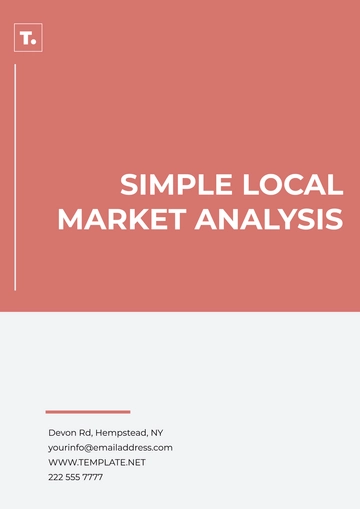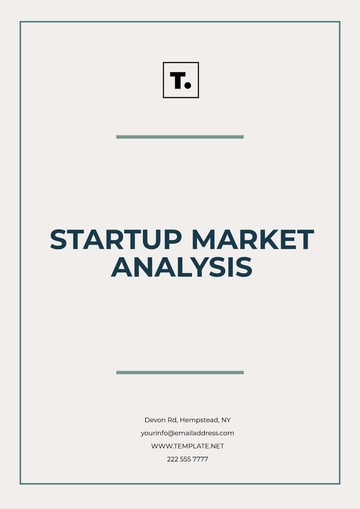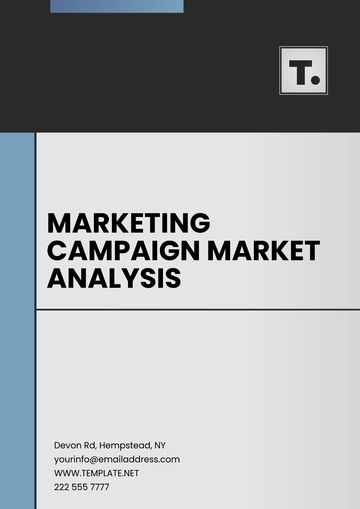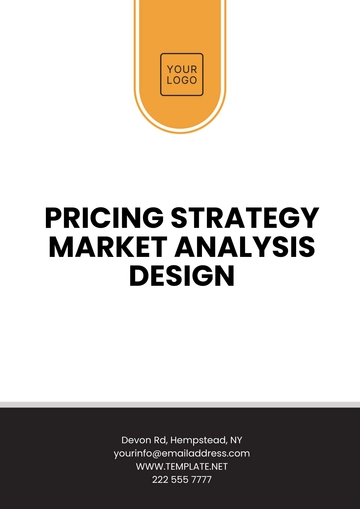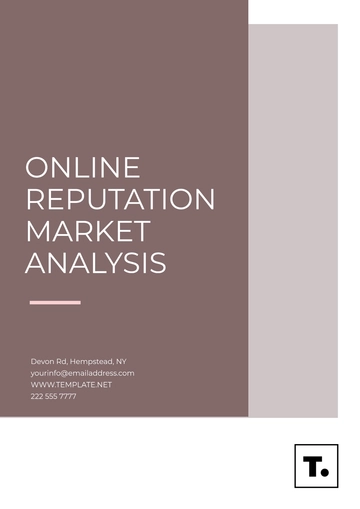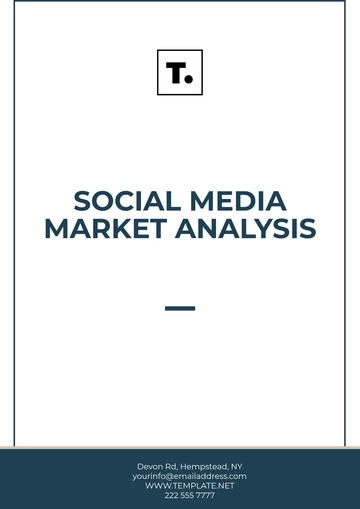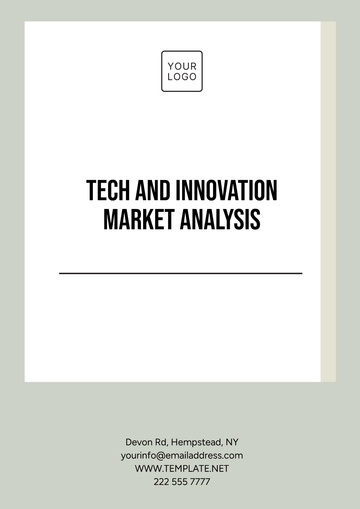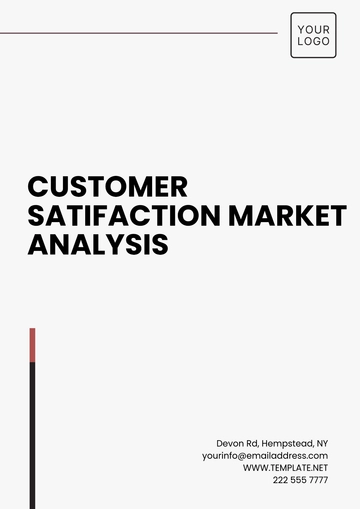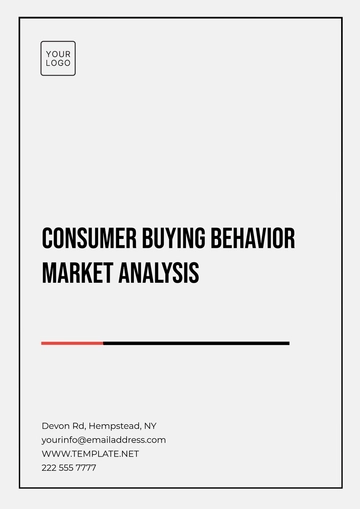Free Marketing Product-Market Financial Analysis
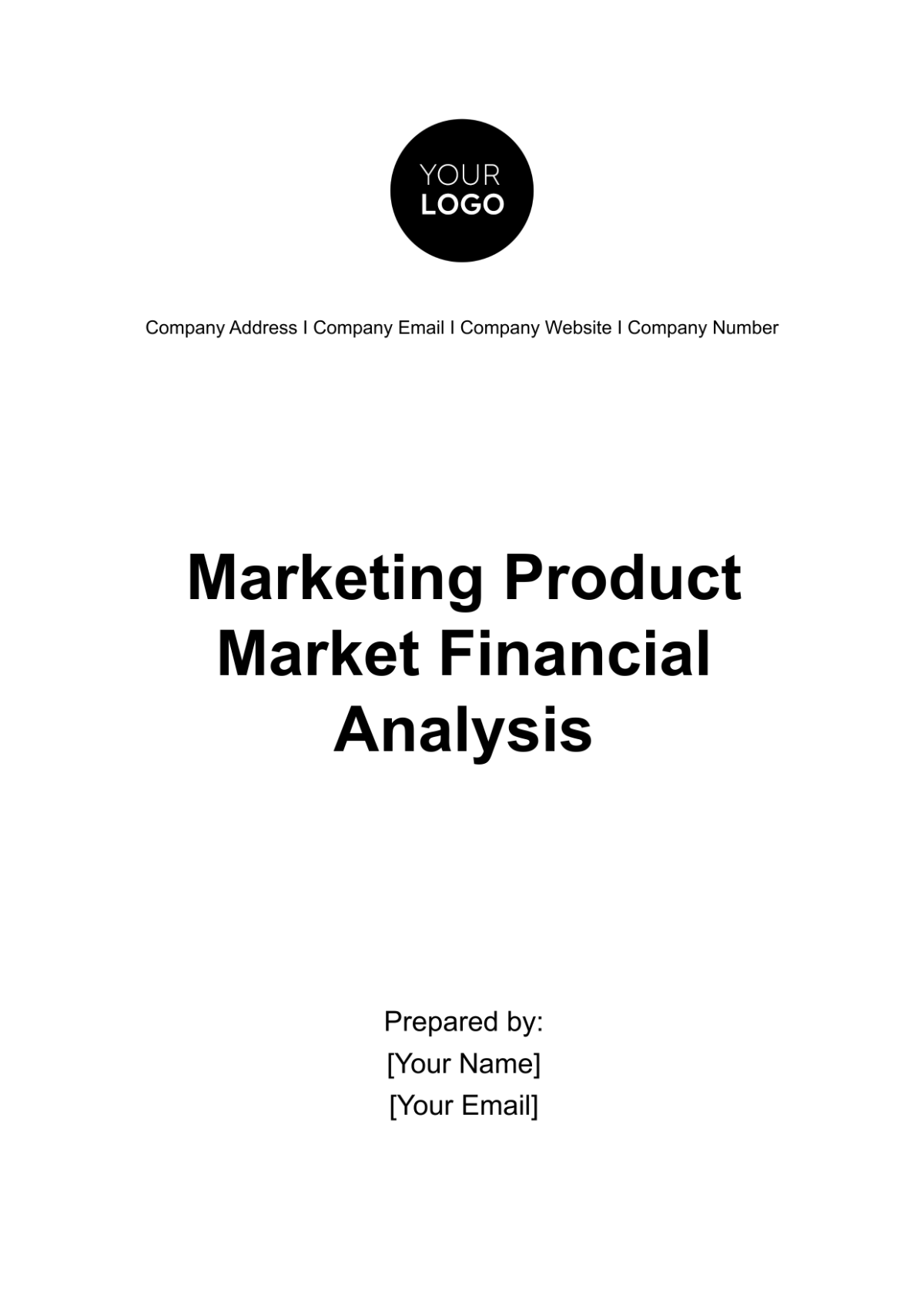
Introduction
A. Product Overview
The Nano Byte Navigator is a cutting-edge software solution designed to streamline business operations. Its key features include automated task management, data analytics, and seamless integration with existing systems. This product aims to address the growing demand for efficiency in the tech industry sector.
B. Market Overview
The tech industry market is experiencing robust growth, with a projected CAGR of 8% from 2050 to 2060. This growth is driven by increased digitization and the need for innovative solutions like Nano Byte Navigator to stay competitive. The market is currently valued at $15 billion.
Market Analysis
A. Market Size and Growth
The tech industry market has exhibited consistent growth over the past decade.
The market is expected to maintain a steady growth rate of approximately 5% annually.
B. Market Trends
Recent market trends indicate a strong shift toward sustainable and eco-friendly products within the tech industry sector. Companies offering green solutions are gaining traction among consumers.
C. Target Market
Our target market comprises medium to large enterprises in the tech industry sector. These businesses are seeking eco-friendly and sustainable solutions to meet the evolving demands of their customers.
Competitor Analysis
A. Competitor Landscape
The chart below provides an overview of the competitor landscape, highlighting the market share of key players:
B. Competitor Financial Performance
Table 1: Competitor Financial Performance
Competitor | Revenue (2050) | Profit Margin (2050) |
Byte Fusion | $3.5 Billion | 18% |
Quantum Sync | $2.5 Billion | 12% |
Cyber Bit | $1.8 Billion | 14% |
Data Pulse | $1.2 Billion | 16% |
Product Analysis
A. Product Features
Nano Byte Navigator offers a range of features, including:
Sustainable materials
Energy efficiency
Advanced IoT integration
Longevity and durability
These features position it as a frontrunner in the eco-friendly tech industry market.
B. Pricing Strategy
Our pricing strategy is competitive, offering eco-conscious solutions at a slight premium to traditional products. This pricing aligns with the value and sustainability we provide.
Financial Projections
A. Sales Forecast
Our sales forecast is based on a thorough analysis of market demand, historical sales data, and anticipated growth in our target market.
2050: We anticipate achieving sales of $30 million in the inaugural year. This initial surge in sales is attributed to the strong market entry and marketing efforts.
2055: As our brand and product recognition grow, we expect sales to reach $45 million in 2055. This growth is supported by our expanding customer base and continued marketing initiatives.
2060: By 2060, we project annual sales of $60 million. This sustained growth is the result of our commitment to product excellence, customer satisfaction, and ongoing market analysis.
B. Revenue Projections
Our revenue projections are derived from the sales forecast and include considerations for pricing, market share, and anticipated customer growth. The following table presents our revenue projections:
Table 2: Revenue Projections
Year | Revenue |
2050 | $10,000,000 |
2055 | $18,000,000 |
2060 | $26,000,000 |
2050: We expect to generate $10 million in revenue in the first year of operation. This is driven by the initial sales surge and our competitive pricing strategy.
2055: By 2055, revenue is projected to increase to $18 million. This growth reflects the expansion of our customer base and the increasing market share.
2060: In 2060, we anticipate revenue reaching $26 million, demonstrating a steady upward trajectory in line with our long-term growth strategy.
C. Cost Analysis
To ensure profitability, it's essential to analyze our operational costs. The following categories encompass our cost analysis:
Development and Maintenance: We allocate $5 million annually to support product development and ongoing maintenance, ensuring our product remains innovative and competitive.
Marketing and Advertising: Our marketing budget is set at $2 million annually. This covers digital advertising, content creation, and participation in industry events to promote brand awareness.
Sales and Customer Support: To maintain excellent customer relations and provide top-tier support, we allocate $1 million each year for sales and customer support activities.
D. Profit Margin
Our projected profit margin is a key indicator of financial success. Based on our revenue projections and cost analysis, we anticipate a profit margin of approximately 25%. This healthy margin demonstrates our commitment to financial stability and long-term sustainability.
Marketing Strategy
A. Marketing Campaigns
Our marketing strategy is designed to maximize brand exposure and customer acquisition. It consists of several key components:
Content Marketing:
We will create high-quality blog posts, articles, and informative content related to our industry. By sharing valuable insights and knowledge, we aim to establish ourselves as thought leaders and attract organic traffic to our website.
Paid Advertising:
We will invest in targeted online advertising campaigns on platforms such as Google Ads and social media channels. These campaigns will reach our target audience effectively and drive traffic to our website.
Social Media Engagement:
Active engagement on social media platforms is crucial. We will regularly post updates, share industry news, and interact with our audience to build a strong online community and brand loyalty.
Industry Events:
Participating in relevant industry events, conferences, and trade shows will enhance our visibility and provide networking opportunities. We will also consider hosting webinars and workshops to showcase our expertise.
B. Customer Acquisition Cost (CAC)
Managing our Customer Acquisition Cost (CAC) is vital to maintaining profitability. We'll closely monitor CAC through the following steps:
Cost Tracking:
We will meticulously track all marketing and advertising expenses associated with customer acquisition.
Conversion Rate Optimization:
To reduce CAC, we will work on improving our website's conversion rates by optimizing landing pages and user experience.
Lifetime Value (LTV):
Understanding the lifetime value of our customers is essential. We will focus on retaining existing customers and maximizing their long-term value to the company.
C. Return on Investment (ROI)
We are committed to measuring the effectiveness of our marketing efforts through Return on Investment (ROI) analysis:
Metrics Monitoring:
We will track key performance indicators (KPIs) such as website traffic, click-through rates, conversion rates, and customer acquisition costs.
ROI Calculations:
By comparing the cost of marketing campaigns to the revenue generated, we will calculate the ROI for each marketing initiative.
Risk Analysis
A. Market Risks
Our analysis identifies several market risks that require attention and mitigation:
Regulatory Changes:
Changes in industry regulations can impact our product's compliance and market access. We will stay informed and adapt quickly to any regulatory shifts.
Economic Downturns:
Economic downturns can affect customer spending. To mitigate this risk, we will maintain financial reserves and diversify our customer base.
B. Competitive Risks
Competition in the tech industry market is fierce, but we have strategies to manage competitive risks:
Continuous Innovation:
We will invest in research and development to ensure our product remains innovative and competitive in the market.
Pricing Strategy:
Our competitive pricing strategy will help us maintain a strong market position and attract price-sensitive customers.
C. Financial Risks
Financial risks can impact our cash flow and profitability. We have strategies in place to address these risks:
Cash Flow Management:
To manage cash flow fluctuations, we will maintain a buffer of liquid assets to cover operational expenses during challenging periods.
Debt Management:
We will carefully manage our debt obligations, ensuring they do not become burdensome.
Conclusion
A. Summary
In summary, our Marketing Product-Market Financial Analysis has provided insights into the promising future of Nano Byte Navigator in the tech industry market. Our comprehensive marketing strategy, commitment to cost-effectiveness, and risk mitigation strategies position us for long-term success.
B. Recommendations
Based on this analysis, we recommend the following actions to drive our business forward:
Marketing Expansion:
Continue expanding our marketing efforts, exploring new advertising channels, and scaling successful campaigns.
Customer Retention:
Focus on customer satisfaction and retention to maximize customer lifetime value.
Regulatory Compliance:
Stay vigilant regarding industry regulations and adapt our product to remain compliant.
Innovation:
Continue investing in research and development to ensure our product remains at the forefront of technology and customer demands.
Financial Prudence:
Maintain financial prudence by closely monitoring expenses and optimizing resource allocation.
For any inquiries, further discussions, or detailed reports on specific aspects of this analysis, please contact us at [Your Company Email] or visit our website [Your Company Website].
- 100% Customizable, free editor
- Access 1 Million+ Templates, photo’s & graphics
- Download or share as a template
- Click and replace photos, graphics, text, backgrounds
- Resize, crop, AI write & more
- Access advanced editor
Optimize financial strategies with the Marketing Product-Market Financial Analysis Template from Template.net. This editable and customizable tool empowers precise analysis for strategic insights. Seamlessly tailor it using our AI Editor Tool, ensuring effortless customization. Elevate your marketing endeavors with this dynamic, editable, and customizable financial analysis template.





